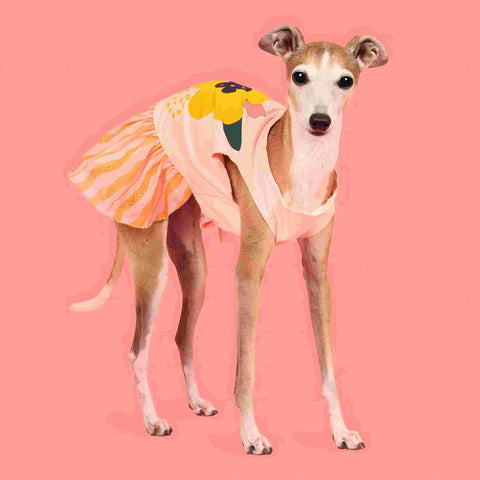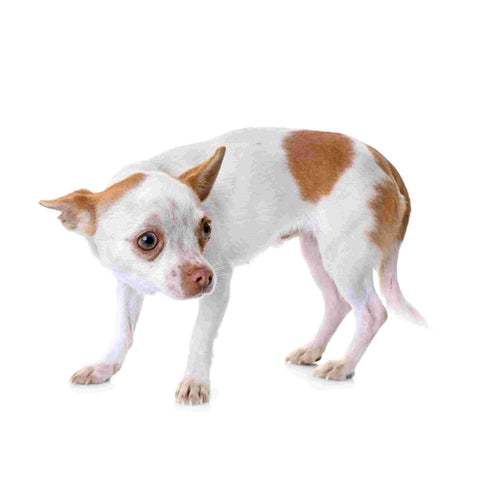Why Do Dogs Wag Their Tails? Understanding Your Pet's Emotions
When it comes to understanding our dogs, their tails can be a significant source of information. But what does it mean when a dog wags its tail?
Is it always a sign of happiness, or could there be more to it? In this blog, we delve into the science behind a dog wagging its tail and decoding what your dog might be trying to tell you.
The Tale of Tail Wagging
Contrary to popular belief, a dog wagging its tail isn't just a sign of a happy dog. It's an instinctive behavior that develops between 3 and 4 weeks of age and serves as one of the primary communication methods for dogs.
While happiness can certainly be a reason for a dog wagging its tail, dogs also wag their tails to express a range of emotions, including nervousness and excitement.

Instagram: puppyparkerposey
Decoding Dog Tail Wags
To truly understand what your dog is trying to communicate through tail wagging, it's important to consider both the position of its tail and the speed of the wag. Here's a quick guide to some common tail positions and what they might mean when your dog is wagging its tail.
Quiet Tail: Still and Calm
When a dog's tail is in its natural position and not wagging, it usually indicates relaxation. For most dogs, the natural position is with the tail hanging down near their heels, but this can vary depending on the breed. For instance, breeds with curly tails, like Pomeranians, naturally carry their tails curled over their backs.

Instagram: gail_fowble
Excited Wag: Erect, Wagging Tail
An erect, wagging tail often signifies excitement. Various stimuli can trigger this behavior, such as spotting a squirrel or greeting a new visitor. However, it's important to note that an excited dog wagging its tail can be unpredictable.

Instagram: 0810.ponpongram
Curious Wag: Backwards and Gentle Wagging
If your dog's tail is positioned backward and wagging gently, it could mean they're curious or slightly unsure about a situation. This tail position is common when dogs come across unfamiliar objects or creatures and start wagging their tails.

Instagram: iggychelseaandme
Fearful Tail: Tail Between Legs
A dog with its tail tucked between its legs is usually feeling nervous or scared. If your dog displays this tail position along with small, throbbing wags or twitches, it could suggest they're contemplating a fight or flight response while wagging its tail.

Dog Tail Wagging in Sleep
Ever seen your dog wag its tail in sleep? It's a common part of their sleep cycle. Tail wagging during sleep could indicate a pleasant dream or even anxiety. It's normal during their Rapid Eye Movement (REM) sleep, just like humans. But excessive "sleep wagging" might suggest a sleep disorder, warranting a vet visit.

Instagram: rescue_pups_of_hope
The Language of Tail Wagging: Understanding the Subtleties
Dogs wag their tails to express various emotions. A wag to the right often means happiness, while a wag to the left can signal fear. This is because the brain's left side, which controls the right body side, is linked to happy feelings, and the right brain side, which controls the left body side, is tied to fear.
The speed of the wag can also provide insights into a dog's emotional state. A fast wag often signifies excitement, while a slow wag can indicate insecurity. A dog that wags its tail very fast while holding it vertically may be displaying aggression.
Even tailless dogs can communicate. They use other body language like ear position, facial expressions, and stance. By understanding these signs and the subtleties of tail wagging, you can better understand your dog's feelings and react in the right way.

Instagram: nelsontherescue
A Comfortable Dog is a Happy Dog
While understanding your dog's emotions is crucial, it's equally important to ensure they're comfortable and secure. One way to do this is by providing them with comfortable and stylish dog clothes. These clothes not only make your pet look adorable, but they also provide essential warmth, making them feel cozy during the colder months.
More than just warmth, the right clothes can give your dog a sense of security, helping them feel more at ease. So, the next time you notice your dog wagging its tail in excitement, consider that it might be the perfect time to introduce them to a new, comfortable outfit. After all, a comfortable and secure dog is a happy dog, and a happy dog wags its tail!
What Every Owner Should Know














